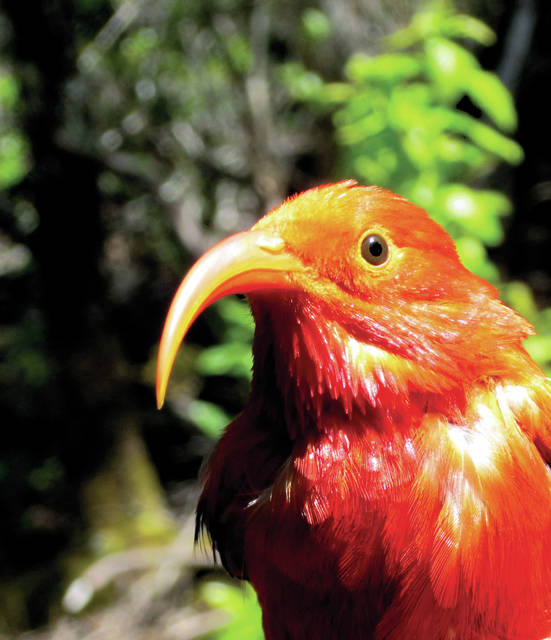HILO — Researchers say climate changes are affecting the indigenous birds of Hawaii. ADVERTISING HILO — Researchers say climate changes are affecting the indigenous birds of Hawaii. “The conservation challenges that the state is facing are so severe,” said U.S.
HILO — Researchers say climate changes are affecting the indigenous birds of Hawaii.
“The conservation challenges that the state is facing are so severe,” said U.S. Forest Service Ecologist Jared Wolfe.
The native Hawaiian birds that were studied time their mating to match abundance of lehua blossoms on ohia trees — the more flowers, the grander the bird populations.
Ohia trees are among the first to colonize new lava deposits. But ohia forests are at risk from the fungal disease known as rapid ohia death. And when ohia trees are affected by drought, the number of nectar-loving birds, such as iwi and apapane, dwindles.
Nectar-loving Hawaii amakihi, which also eat other foods, remain unaffected.
When rains return, and lehua flowers flourish, the populations of iwi and apapane rebound.
An article titled “Bottom-up Processes Influence the Demography and Life-cycle Phenology of Hawaiian Bird Communities” (https://bit.ly/2jmHq8F) was published in September by the journal Ecology, a peer-reviewed research publication of the Ecology Society of America.
Wolfe, lead author of the study, said during a telephone interview that the research is important because ohia trees are a “critical component of the Hawaiian ecosystem.” He also noted in a statement announcing the study that “our results suggest that changes in climate can cascade up the food chain and strongly affect wildlife at higher levels in the chain.”
Wolfe and colleagues at the U.S. Forest Service Pacific Southwest Research Station “reviewed extensive climate, vegetation and bird data collected between 1976 and 1982 at a 40-acre monitoring site about 5 miles outside Hawaii Volcanoes National Park on Hawaii Island,” says a news release announcing the study.
“The data was actually collected when I was a kid,” Wolfe said.
Extraordinarily detailed data was collected about plants and birds, including weather, timing of flowering, fruiting, mating and molting — a vulnerable period when birds lose feathers.
“These types of data sets are very rare,” Wolfe said. When he learned about the data’s existence, he sought the opportunity to use it to better understand climate change.
A key finding of the study is that “changes in climate can influence the food that’s important to birds,” Wolfe said.
The study on Hawaii Island was important to the study of climate change overall because the island is a relatively isolated environment, which means researchers could discount other potential causes of their conclusions.
Such other causes, known to scientists as “confounders,” can skew research results. In this study, confounders could have included mainland characteristics such as irrigation, pesticide application or copious backyard bird feeders. None of that was present at the study site.
Birds that are obligate nectar feeders such as iwi and apapane, meaning they must consume nectar, Wolfe said, “are subject to sudden population decline” directly stemming from food supply.
The birds studied weren’t able to switch temporarily to another food source until lehua blossoms were replenished.
“We found that Hawaii amakihi, a dietary generalist, was the only native nectar-feeding study species … to have a stable population,” the journal article says.
Such birds were able to feed on other food sources including bugs or berries in the interim when nectar wasn’t available.
The study will be important when looking at climate change in the years to come, Wolfe said.
He noted the study was observational. So it provides a historical benchmark from the late ‘70s and early ’80s as a starting point. But, he noted, now the “climate’s changing so quickly” that it’s hard to study.
Wolfe asks the public to “support good science, support good scientists who can work ‘outside the box.’”
The journal article states “the future of native Hawaiian birds may depend on their behavioral plasticity to mitigate changes in food resources and to successfully compete with co-occurring non-native bird species.”
“It’s sad that evolutionarily distinct species are going to be the most challenged,” Wofe said.
Email Jeff Hansel at jhansel@hawaiitribune-herald.com.



